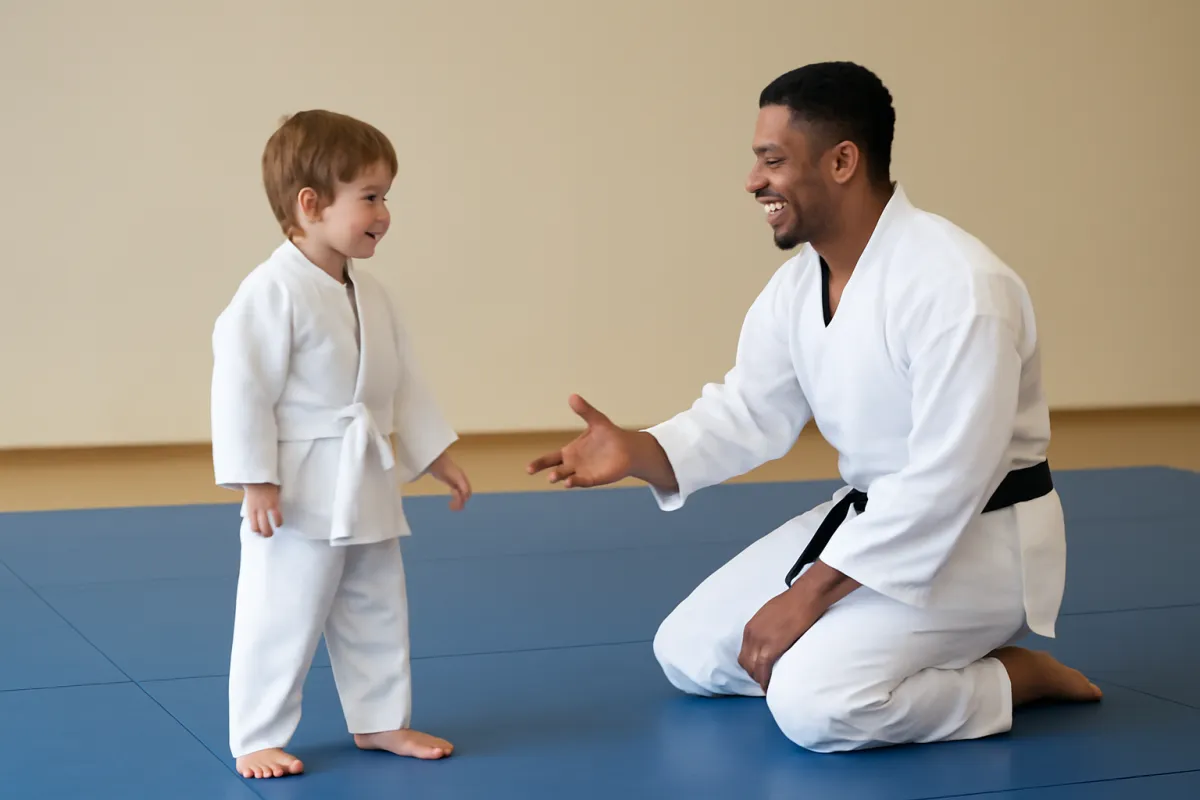
What to Expect in Your Child’s First Martial Arts Class
"Martial arts: its meditative movement with a clear purpose.” - The Martial Artistry
Starting martial arts can be an exciting and transformative journey for children. Parents often wonder what the first class will be like—what to bring, how the class flows, and what behaviors will be encouraged. To ease those first-day jitters, here’s a guide to help your family feel prepared and confident before stepping onto the mat.
What to Bring to the First Class
One of the biggest questions parents have is: “Do we need gear right away?” The good news is that most martial arts schools welcome beginners with minimal requirements. Here are a few essentials:
Comfortable Clothing – If your child doesn’t yet have a uniform (gi or dobok), they can wear athletic shorts, sweatpants, or leggings with a t-shirt. The clothing should allow free movement.
Water Bottle – Training can be physically engaging, so hydration is important. A spill-proof bottle is ideal.
Positive Attitude – Encourage your child to enter the class ready to try new things, listen to the instructor, and have fun.
Most schools provide loaner belts or beginner uniforms after enrollment, but the first class is usually about introducing kids to the environment and culture.

How the Class Flows
While every martial arts school has its own style and approach, most children’s classes follow a familiar structure:
Warm-Up & Stretching
The instructor leads students through fun, dynamic exercises like jumping jacks, running, or light drills to get the body moving. Stretching follows to improve flexibility and prevent injuries.Basic Techniques
New students are usually introduced to fundamental movements such as basic stances, blocks, or simple strikes (always practiced with control). These techniques lay the foundation for future learning.Partner Drills & Activities
Children often practice with a partner in safe, structured exercises. This builds teamwork, communication, and respect for others.Games with Purpose
Many schools use age-appropriate martial arts games that reinforce focus, balance, and coordination while keeping the class fun.Character Development & Life Skills
Instructors often pause for a short “mat chat,” discussing life lessons such as respect, perseverance, or responsibility. These values are as important as the physical training.Cool Down & Dismissal
The class wraps up with light stretching, reflection, and a respectful bow to the instructor.
Behaviors Reinforced in Martial Arts
Beyond the physical techniques, martial arts schools emphasize character development. Parents are often pleasantly surprised at how quickly children adopt new habits that carry over into home and school life. Key behaviors reinforced include:
Respect – Students learn to bow to instructors, partners, and even the training space. This sets a tone of gratitude and humility.
Focus & Listening – Kids are encouraged to make eye contact, follow directions, and stay attentive.
Self-Discipline – Repetition of techniques teaches patience and persistence, building long-term habits of self-control.
Confidence – As children achieve small wins, like mastering a stance or breaking a board, they build belief in their abilities.
Teamwork – Partner drills and group activities teach cooperation and support for peers.
Helping Your Child Feel Comfortable
The first class can feel overwhelming, especially if your child is shy. Here are a few tips to help them succeed:
Arrive Early – Give your child time to meet the instructor, see the space, and adjust before class starts.
Encourage Observation – Watching a few minutes of class beforehand can help them know what to expect.
Stay Positive – Remind your child that everyone was new once, and making mistakes is part of learning.
Cheer Them On – A smile, thumbs-up, or supportive word from you goes a long way in boosting their confidence.
The Bigger Picture
The first martial arts class is just the beginning of an exciting journey. With every bow, every punch, and every challenge, children are building skills that will serve them for life. Parents often notice improvements in behavior, confidence, and resilience after just a few weeks of training.
So when you bring your child to their first martial arts class, know that you’re not just introducing them to a sport—you’re opening the door to personal growth, discipline, and lifelong habits of health and respect.
